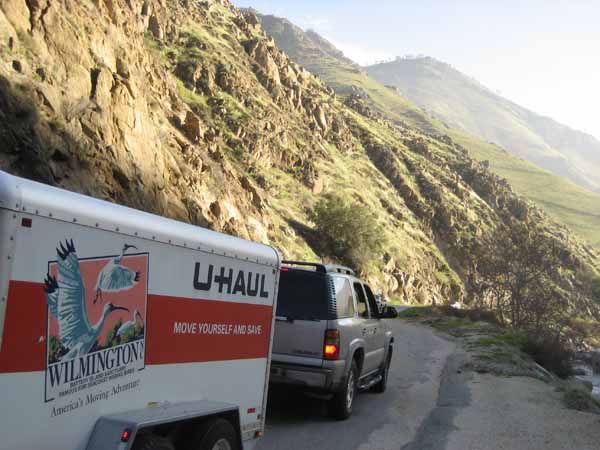Rayra - good stuff. The 02 Avalanche is a 6000# truck with a 327CI engine that only makes 285 hp and equivalent torque. That's a serious detune on GMs part for that engine - as the more recent engines (same CI) but with 350-385HP and torque indicate. Combine the detune with the heavy vehicle and you have what amounts to a dog - it's OK, it's MY dog so I can call it that.
I have blown 3 transmissions in this truck. Always the same symptom, always the same issue, always the same type of driving.
Transmission 1: Completely stock Avalanche - ZERO mods. Cruising 70mph, flat freeway, 10 5 gal cans of fuel in bed of truck (I was a VP dealer) ~500#. Cruise control set and just tooling along - rpm's start flaring, as soon as I noticed what was going on and took the cruise off - too late - bang. Lost 3rd-4th gears. Limped it home in 2nd.
Transmission 2: (less than a year later) Completely stock Avalanche (except for rebuilt trans). Same scenario, but completely unloaded coming DOWN Grapevine near Magic Mountain. Same thing, 70 mph, cruising, rpm flared to the moon, before I could react - bang. Lost 3rd-4th. Drove it home to Riverside in 2nd gear.
Transmission 3: Modded the truck and added the trans-cooler. Noticed the flare ups would happen after 45 mins or so of steady driving - got wise to the RPM flare. Would watch and wait for it - as soon as it would start to creep up, I'd let off the throttle, coast for a second or two and get back in it and it would be fine for a while. Sometimes this would happen once, sometimes more than once - but I managed it with my head and foot. Then we were on our most recent trip to Lake Mead (loaded and pulling the popup - not much actual weight) noticed it flaring more frequently. Did one wheeling trail and it did just fine, but then on the road back to camp it really started acting up. Decided to not chance any additional wheeling and just get it home. On the way home, same occasional flare up, but around the base of Cajon Pass, it REALLY started acting up.
That's when I decided I was done with this transmission - I didn't want ANYTHING from it. And now I have transmission #4 - and so far everything is really solid - albeit this one has beefed up internals.
Transmission shop owner (along with my research - this is a pretty common issue with the 4L60E) told me the issue is common and is caused by GM using an aluminum drum and a steel shaft - they heat at different rates. The fluid thins as it gets hot and the 3rd gear fluid starts seeping into the 4th gear clutch pack. When it goes - that's why it takes out those two gears.
Since I'm a drag racer - I decided to check into late model Chevy racers (I race a Mopar) who use the 4L60E - and guess what I find? The same issue, but for $6500 you can get yourself a bulletproof 4L60E that corrects that exact issue (along with making it a full race trans). But, my point is - that's a common enough issue that a very well known race trans shop who specializes in GM race trans - thinks it's important enough to call out and specifically identify their solution to this problem. That means it's a real problem in the trans design.
The transmission shop owner who did my first trans, never diagnosed the cause - he just fixed what was broken. The second shop owner who did my second trans - fixed what was broken and was trying to determine a cause and used Corvette servo and thicker band and had me bump up the line pressure on the 3-4 gears in my tuner trying to prevent what he THOUGHT could be happening. He actually thought it might be a glitch in my computer.
Now -the owner of the shop I'm currently dealing with is the first guy who said "I know what this is - I'm really familiar with it and here's what's happening and why". When he took my old trans out, he showed me what was going on by putting an air hose on the shaft (with it cold) and it was leaking into the next gear pack.
After enough research and finding this issue all over the place, and it seems to be unique to this trans - I'm pretty certain GM has a design flaw that they will never acknowledge. I am extremely familiar with the corporate side of the big US auto-manufacturers and they will not willingly admit a fault (Ford has still never acknowledged the issue with the Pinto - but I digress).
So - my hope is that with the new trans, with upgraded parts, built by a guy who seems to: 1) Know about the issue; 2) Understand how to address and prevent the issue from occurring - that my transmission troubles are behind me. The new trans has not yet had to climb a grade nor has it towed anything - so I'll keep an eye on my temps.
I also took some advice offered earlier in the thread and added a bottle of Water Wetter (or the Lucas version of it) into my coolant tank.
Many thanks.

